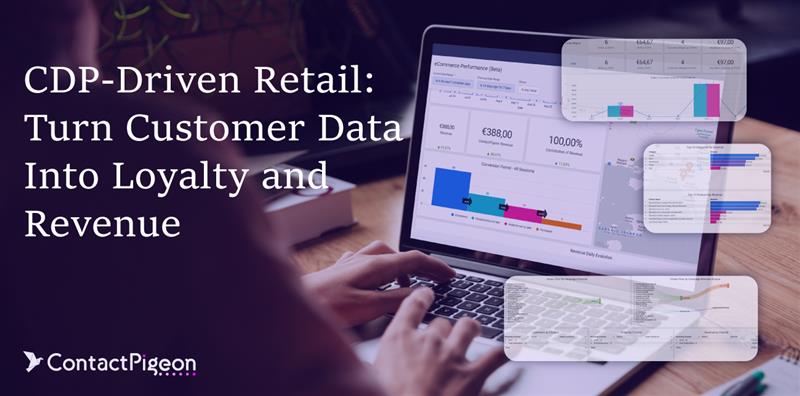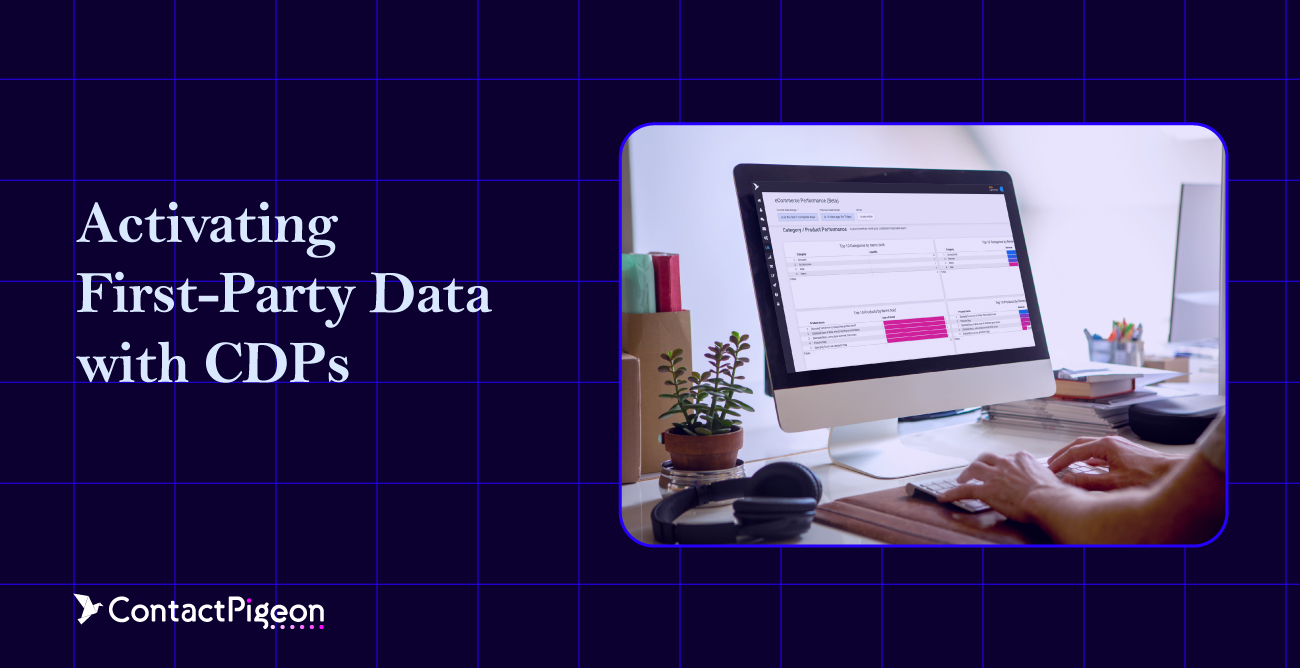In today’s CDP-driven retail landscape, customer data is no longer just an asset; it’s the engine behind loyalty, personalization, and revenue growth. Customer Data Platforms (CDPs) unify fragmented data into actionable insights, and leading brands are demonstrating how this technology drives success in retail. By eliminating silos and creating a single customer view, retailers can engage with precision at every touchpoint, from digital campaigns to in-store interactions. CDPs also enable advanced analytics, allowing teams to predict customer behavior and optimize marketing spend in real-time. As competition intensifies, the ability to activate data swiftly is becoming the key difference between brands that lead their markets and those that lag.
Short on time? Catch the key insights on the go.
Let’s break down the key points
- CDPs unify customer data into a single profile, powering personalization, loyalty, and revenue growth.
- Hyper-personalization and omnichannel engagement drive higher CLV, conversion rates, and retention.
- AI and predictive analytics enable smarter recommendations, upsell, and cross-sell opportunities.
- Retail-focused CDP features like real-time segmentation, identity resolution, and journey mapping are essential for growth.
- Success requires strategy: align departments, maintain clean data, select the right vendor, and continuously optimize campaigns.
Top benefits of a CDP-driven retail strategy
A CDP-driven retail strategy doesn’t just centralize customer data; it transforms it into a growth engine. By turning fragmented insights into hyper-personalized, omnichannel experiences, retailers can unlock measurable gains in CLV, retention, and revenue optimization.
| CDP Benefit | Business Impact |
|---|---|
| Hyper-personalized experiences | Higher CLV through tailored recommendations |
| Omnichannel engagement | Seamless journeys across web, app, and store |
| Advanced segmentation | Targeted campaigns with improved conversion rates |
| Data unification | 360° customer view for smarter decision-making |
| Unified analytics | Faster insights driving revenue optimization |
How CDPs drive customer loyalty?
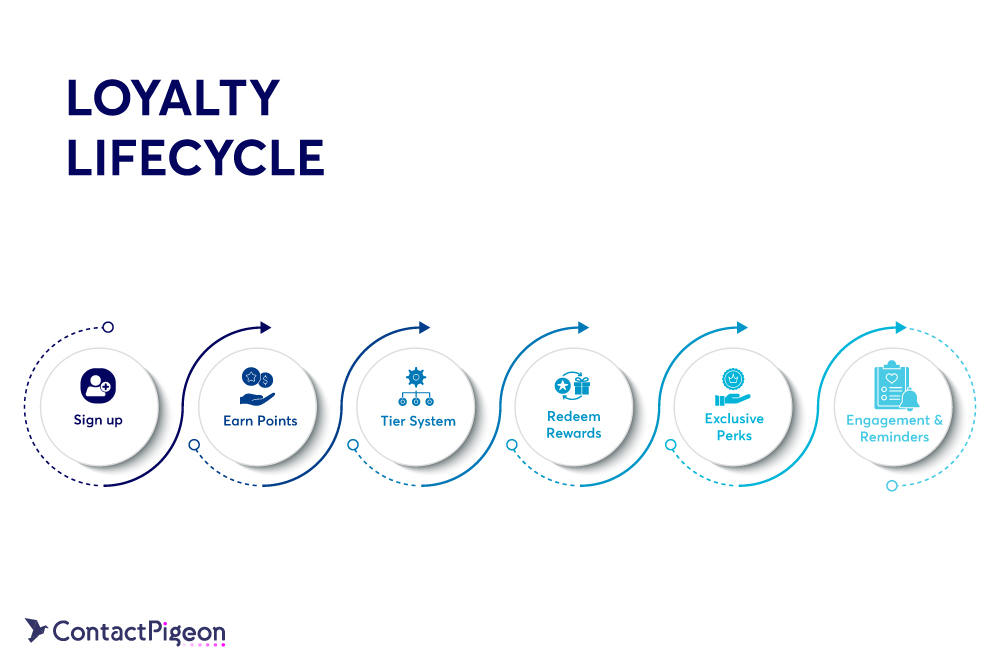
Customer Data Platforms (CDPs) empower loyalty campaigns by transforming raw data into highly actionable insights. With predictive personalization, brands can anticipate customer needs and deliver timely offers that resonate. Behavior-based retargeting ensures that shoppers who disengage are re-engaged with relevant messaging, boosting retention. Meanwhile, personalized reward systems align incentives with individual preferences, strengthening emotional connections and repeat purchases. Together, these capabilities enable retailers to move beyond generic loyalty programs and build CDP campaigns that maximize customer lifetime value and long-term brand loyalty.
How CDPs impact revenue growth?
By consolidating all touchpoint data into a unified customer profile, CDPs enhance upsell and cross-sell effectiveness through intelligent recommendations that align with each customer’s interests. This personalization boosts average order value by delivering relevant offers at the right moment. Unified profiles also enable timely cart abandonment interventions, reducing lost sales by recognizing and addressing friction points. According to McKinsey, companies that grow faster drive 40% more revenue from personalization than slower-growing counterparts. This demonstrates why a CDP retail strategy is now a revenue engine, not just a data tool.
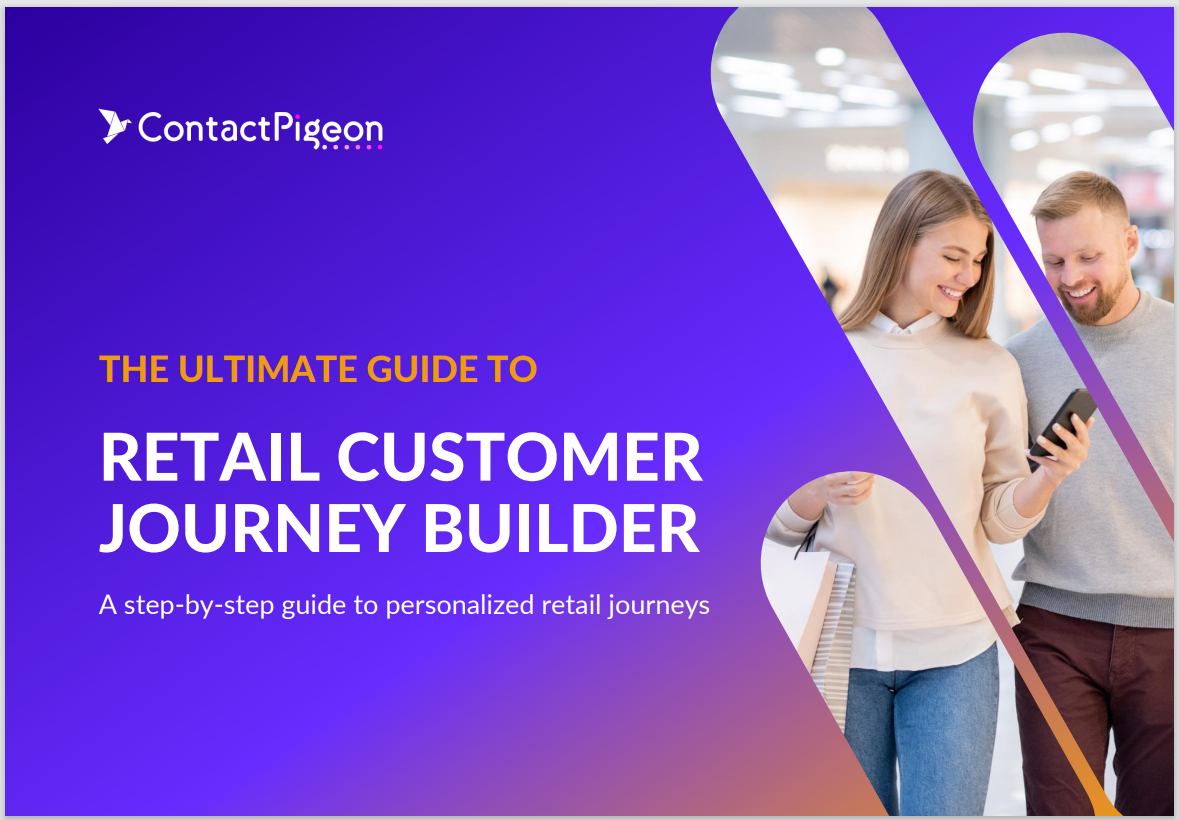
Build smarter customer journeys and activate AI-driven personalization for repeat purchases.
Key features of retail-focused CDPs
Retail-focused CDPs in retail offer must-have capabilities that directly impact growth and loyalty. Identity resolution ensures that each customer’s interactions across channels are unified into a single, comprehensive profile. Omnichannel orchestration enables seamless experiences across web, app, email, and in-store touchpoints. With real-time segmentation, retailers can instantly adjust their messaging to match customer behavior. Journey mapping provides visibility into the full shopper lifecycle, while AI-driven recommendations deliver hyper-personalized product suggestions, boosting conversions and lifetime value. Together, these features are the foundation of a modern CDP retail strategy.
Still deciding between CDP types? Read our guide on Packaged vs Composable CDPs for Retail to choose the best fit for your tech stack.
Steps to build a CDP-driven retail strategy
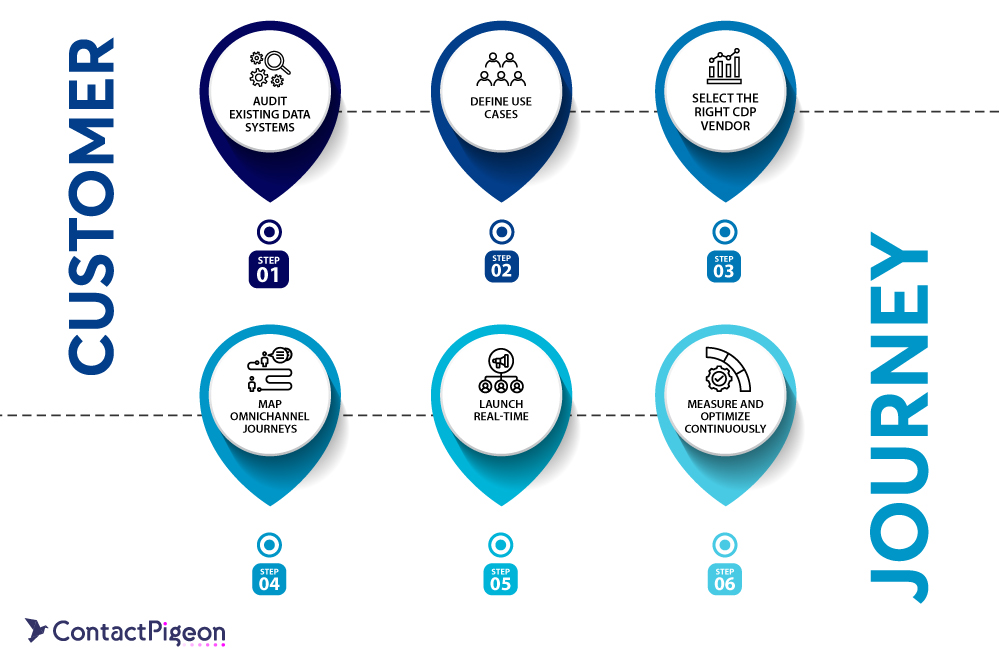
Building a CDP-driven retail strategy requires more than just adopting new technology; it demands a structured, outcome-focused approach. By following these key steps, retailers can ensure their CDP investment translates into seamless omnichannel experiences, higher CLV, and measurable revenue impact.
- Step 1: Audit existing data systems – Before layering a CDP on top, retailers need a clear view of what data they already collect. This includes POS transactions, eCommerce activity, loyalty program sign-ups, customer service interactions, and even IoT data from smart shelves or mobile apps. Review current data sources and integrations to identify silos, gaps, and opportunities for unification.
- Step 2: Define use cases (loyalty, retention, acquisition) – Align CDP goals with business priorities, focusing on measurable outcomes like improved retention or higher CLV.
- Step 3: Select the right CDP vendor – Evaluate platforms based on scalability, retail-focused features, and integration with your existing marketing technology (martech) stack.
- Step 4: Map omnichannel journeys – Modern shoppers don’t think in “channels”, they think in terms of experiences. A CDP enables retailers to map and unify journeys. Design customer flows across digital and physical touchpoints to ensure seamless experiences
- Step 5: Launch real-time, behavior-based CDP campaigns – The real competitive edge of a CDP lies in speed. Instead of static campaigns planned weeks, retailers can deploy abandoned cart triggers, geo-targeted push notifications, and dynamic product recommendations.
- Step 6:Measure and optimize continuously – Track KPIs such as engagement, ROAS, and repeat purchase rates to refine strategy.
Common pitfalls to avoid with CDPs
While CDPs unlock enormous value for retailers, many implementations fall short due to avoidable missteps. Recognizing these common pitfalls early helps retail leaders maximize adoption, protect ROI, and turn their CDP into a true growth engine.
- Misaligned departments – A CDP is not just a marketing tool; it impacts IT (data integration), sales (customer engagement), and even merchandising (product recommendations). When departments remain siloed, the CDP often becomes underutilized or used inconsistently. Successful CDP adoption requires a governance framework and cross-functional steering committees to ensure every department pulls in the same direction.
- Poor data hygiene – Duplicate customer profiles, outdated email addresses, or inconsistent transaction data undermine segmentation accuracy and predictive models. For retail specifically, this can mean irrelevant product recommendations or wasted ad spend on lapsed customers. Strong data governance, including regular deduplication, enrichment, and consent validation, should be embedded in the CDP rollout plan. Otherwise, the platform risks becoming a sophisticated database full of flawed insights.
- Choosing CDPs that don’t support retail use cases – Many CDPs were built as horizontal tools and lack retail-specific functionality. Many platforms lack features like real-time segmentation or omnichannel orchestration, which are critical for retail. A platform without these capabilities will create bottlenecks during peak sales events or fail to deliver unified experiences across store and digital channels. Retailers must evaluate vendors not only on their technical specs but also on their proven retail case studies and ability to scale during high-demand events like BFCM.
- Lack of internal training on usage – Many retailers fall into the trap of assuming implementation equals adoption. In reality, undertrained teams often stick to “safe” or limited features, treating the CDP as a glorified email list manager instead of a growth engine. Structured onboarding, role-specific training, and continuous enablement ensure that marketing, analytics, and IT teams all leverage the platform to its fullest potential.
Want to discover more about CDP Pitfalls? Read our blog article “CDP Pitfalls for E-commerce Business” and learn what to avoid!
How does real-time data ingestion in a CDP impact retail campaign performance?
Real-time ingestion processes behavior instantly, triggering automations like cart reminders, price-drop alerts, or loyalty updates. Retailers utilizing real-time CDPs in retail typically experience higher open rates, lower churn, and more accurate personalization.
How do CDPs handle data privacy and compliance?
Enterprise-grade CDPs are designed with GDPR/CCPA compliance in mind, tracking consent, automating data subject requests, and ensuring encrypted, auditable data governance.
Is a CDP suitable for mid-sized or only enterprise retailers?
Modern CDPs are modular and scalable, making them effective for mid-market retailers aiming to unify channels, personalize loyalty, and launch cost-efficient CDP campaigns.
How do CDPs support AI and predictive analytics?
By providing unified, structured data, CDPs enable predictive scoring, AI-driven recommendations, and propensity modeling. Many CDPs include built-in AI engines for seamless deployment in retail campaigns.
The future is CDP-driven
CDP-driven retail is no longer optional; it’s the blueprint for personalization at scale. Customer Data Platforms enable retailers to deliver personalized omnichannel experiences, foster long-term loyalty, and drive measurable revenue growth. They also future-proof retail organizations by ensuring data compliance, unlocking AI-driven insights, and enabling agility during peak demand cycles like BFCM. In a market where consumer expectations shift rapidly, CDPs give retailers the ability to respond in real time, not months later. For leaders looking to outpace competitors, investing in a CDP is less about technology adoption and more about building the foundation for sustainable growth.
Discover how leading retailers are boosting loyalty with real-time data. Book a free demo with ContactPigeon’s CDP experts and start driving results today.


